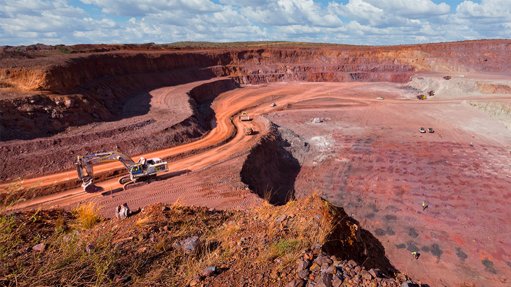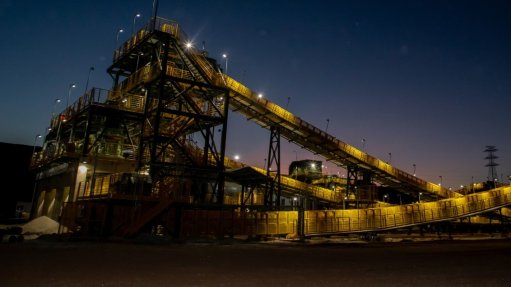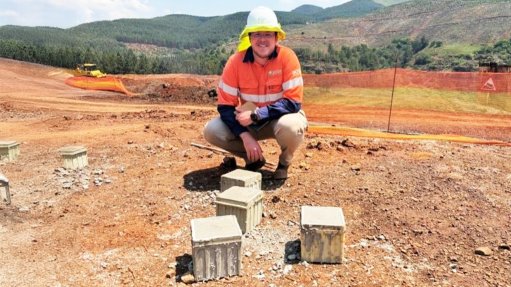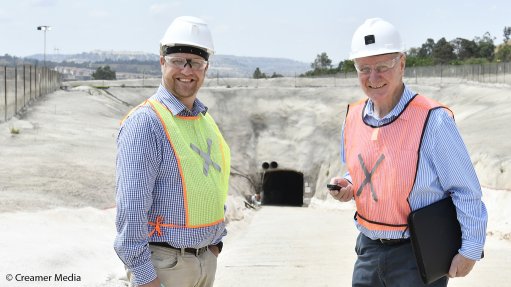CFBC the preferred coal combustion technology
Among the coal combustion technologies developed to achieve lower emissions, circulating fluidised-bed combustion (CFBC) technology is the preferred clean coal technology option, says Fossil Fuel Foundation cofounder and executive committee member Professor Rosemary Falcon.
Despite South Africa’s power stations implementing alternative technologies, Falcon tells Mining Weekly that CFBC has more advantages than its counterpart, pulverised fuel (PF) plant using flue gas desulphurisation (FGD), or PF-FGD technology, adding that existing large electricity-generating power stations currently implement PF technology without FGD.
This is because local power stations were designed and constructed between 1960 and 2000, when PF technology was the world’s predominant coal-cleaning technology. This changed when CFBC technology reached commercial maturity in the late 1980s, resulting in it being an established competitive clean coal technology option, Falcon explains.
Meanwhile, she notes that, in light of recent South African environmental legislation, sulphur dioxide (SO2) emissions are being regulated for new power stations, with technology being retrofitted to existing power stations to comply with emissions standards.
Falcon highlights that State-owned power utility Eskom’s Kusile coal-fired power station, in Mpumalanga, will be South Africa’s first PF-FGD power station, adding that Eskom’s Medupi coal-fired power station and others will follow suit with PF-FGD technology, pending negotiations with environmental authorities.
She explains that the reason new and retrofitted power stations are not implementing CFBC immediately, despite its advantages, is that, during the construction of local power stations, CFBCs were only implemented in small power stations – too small for Eskom to consider. “They were operating in the order of 200 MW or less per unit, versus the 600 MW or 800 MW per unit for Eskom’s needs. This is no longer the case – it is now possible to match the power production of Medupi or Kusile with modern sophisticated CFBC units,” says Falcon.
Infrastructure
Compared with PF-FGD, CFBC has significant benefits, says Falcon. CFBC has less grinding costs, lower thermal nitrogen oxide (NO2) emissions, is cheaper to operate, can combust discards and can accommodate a far broader range of poorer- quality coal, and is flexible enough to use other cofired materials, such as low- carbon biomass, she explains. This suits South Africa, owing to the abundance of low-quality coal.
In addition, CFBC technology uses half the amount of water required by PF-FGD to remove SO2. This is because CFBC can reduce SO2 emissions while combusting coal within the operating bed, using limestone or dolomite. This is especially significant as South Africa has an abundance of local dolomite in and around Gauteng and Mpumalanga with which to scrub SO2 emissions, whereas limestone, of which there are limited quantities in South Africa, is generally further away from power stations and is allocated for the production of cement and lime. In this way, CFBC and PF-FGD will meet South Africa’s emissions legislation.
Falcon outlines two scenarios to explain what is needed in terms of infrastructure to introduce CFBC as a replacement for PF technology. The first scenario involves demolishing existing old and inefficient PF power stations and replacing them with CFBC boilers; where possible, the remaining ancillary equipment on a power station would remain, namely loading, storing and handling equipment both for coal and coal ash.
This retrofitting approach has been successfully executed at Poland’s Lagisza power plant, which was originally specified as a PF unit, with designers opting for the implementation of CFBC technology owing to its ability to burn a wider range of fuels. This has impacted positively on the plant’s life cycle economics. Feasibility studies for the replacement of Eskom’s Komati PF firing power station were undertaken in 2000, but this was deemed uneconomic at the time, says Falcon.
In the second scenario, a new CFBC facility would involve the same major components needed for a PF facility in terms of coal and sorbent supply facilities and ash handling equipment for such a power station. This is likely to be the more cost-effective and simpler solution.
Research and Development
As South Africa’s coal reserves are declining, there is increased opportunity for new technologies with far greater coal-quality flexibility to be implemented. While high-quality coal is being exported and medium- quality coal is being used for power generation, low-quality coal can be used for alternative technologies, such as CFBC, which are less detrimental to the environment, explains Falcon.
She adds that coal being used for baseload power and midmerit electricity complements the variability of renewable-energy alternatives.
Meanwhile, despite opportunities in South Africa’s renewable-energy and clean coal technology sectors, the coal power generation sector faces numerous challenges.
Falcon says research and development (R&D) in matching CFBC technology to local coals, sorbents and solutions is currently lacking. As such, she says that a consortium, comprising delegates from, among others, the universities of the Witwatersrand and North-West, Eskom, Sasol and the Council for Scientific and Industrial Research have proposed the establishment of a national CFBC testing facility to conduct this much-needed R&D. This would also allow for skills development in this new technology when installed in this country or in the region. No such skills are available at present.
The challenge of coal and sorbent mining and supply would also be alleviated through the CFBC R&D facility, as this would allow for the testing of numerous coal and sorbent resources to determine their suitability for CFBC.
Falcon also highlights limited water supply as a challenge, emphasising the importance of limiting coal technologies to dry-cooling and reducing the water consumption of FGD application.
Other challenges include environmental compliance and carbon tax, where all coal technologies must comply with gaseous emissions legislation. Carbon tax is a constraint for fossil fuels, but Falcon explains that “CFBC is better able to combust renewable biomass which, when cofired with coal, allows for [fossil fuels] to be far more carbon neutral”. This is an exciting prospect – bringing renewables (biomass) and coal-fired power generation into a highly beneficial and long-term low-carbon mitigation perspective, enthuses Falcon.
She reports that the source of biomass is also being researched at present, with the possibility of developing bamboo-based vegetation on rehabilitated mineland, thereby not competing with agricultural land or food crops.
Coal, which is vital to South Africa, is a storable energy source with the country having “well over 200 000-billion tons of resources left”, providing South Africa with long-term sustainability in South Africa’s energy mix, she adds.
Coal is currently responsible for more than 250 000 direct jobs in the coal industry, with more than four times more people supported by those direct jobs. Stable, storable, secure and consistent energy is the key for success in a country’s economy, Falcon concludes.
Article Enquiry
Email Article
Save Article
Feedback
To advertise email advertising@creamermedia.co.za or click here
Press Office
Announcements
What's On
Subscribe to improve your user experience...
Option 1 (equivalent of R125 a month):
Receive a weekly copy of Creamer Media's Engineering News & Mining Weekly magazine
(print copy for those in South Africa and e-magazine for those outside of South Africa)
Receive daily email newsletters
Access to full search results
Access archive of magazine back copies
Access to Projects in Progress
Access to ONE Research Report of your choice in PDF format
Option 2 (equivalent of R375 a month):
All benefits from Option 1
PLUS
Access to Creamer Media's Research Channel Africa for ALL Research Reports, in PDF format, on various industrial and mining sectors
including Electricity; Water; Energy Transition; Hydrogen; Roads, Rail and Ports; Coal; Gold; Platinum; Battery Metals; etc.
Already a subscriber?
Forgotten your password?
Receive weekly copy of Creamer Media's Engineering News & Mining Weekly magazine (print copy for those in South Africa and e-magazine for those outside of South Africa)
➕
Recieve daily email newsletters
➕
Access to full search results
➕
Access archive of magazine back copies
➕
Access to Projects in Progress
➕
Access to ONE Research Report of your choice in PDF format
RESEARCH CHANNEL AFRICA
R4500 (equivalent of R375 a month)
SUBSCRIBEAll benefits from Option 1
➕
Access to Creamer Media's Research Channel Africa for ALL Research Reports on various industrial and mining sectors, in PDF format, including on:
Electricity
➕
Water
➕
Energy Transition
➕
Hydrogen
➕
Roads, Rail and Ports
➕
Coal
➕
Gold
➕
Platinum
➕
Battery Metals
➕
etc.
Receive all benefits from Option 1 or Option 2 delivered to numerous people at your company
➕
Multiple User names and Passwords for simultaneous log-ins
➕
Intranet integration access to all in your organisation


















